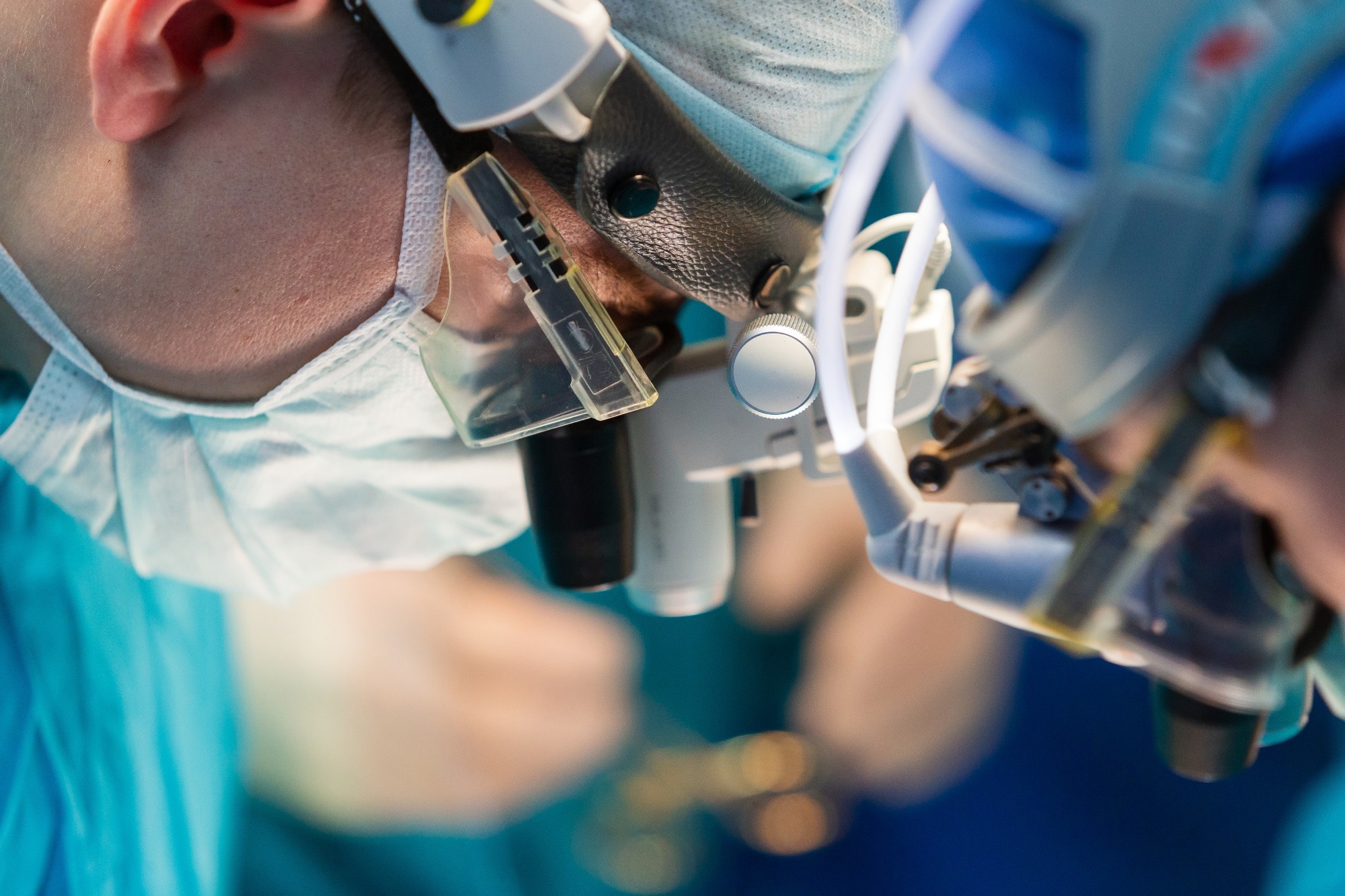In a recent study published in eClinicalMedicine, researchers conduct a phase II clinical trial to evaluate the safety and feasibility of prolonged dual hypothermic oxygenated machine perfusion (DHOPE) for extending human donor liver preservation to 20 hours, specifically for donation after brain death (DBD) donor livers, aiming to facilitate daytime transplantation.
 Study: Prolonged hypothermic machine perfusion enables daytime liver transplantation – an IDEAL stage 2 prospective clinical trial. Image Credit: Dmitriy Kandinskiy / Shutterstock.com
Study: Prolonged hypothermic machine perfusion enables daytime liver transplantation – an IDEAL stage 2 prospective clinical trial. Image Credit: Dmitriy Kandinskiy / Shutterstock.com
Preserving organs for transplantation
Liver transplantation is a critical emergency procedure due to donor liver deterioration from ice storage. Long-term liver preservation is crucial for logistics and organ waste reduction.
DHOPE can improve transplant outcomes by mitigating ischemia-reperfusion injuries. Preclinical evaluations have reported that DHOPE can extend preservation for up to 24 hours, with a multi-center observational cohort study showing excellent outcomes for preserved liver transplants. However, prolonged DHOPE requires further evidence for widespread clinical application.
About the study
In the present prospective study, researchers compare the safety and feasibility of prolonged DHOPE with conventional DHOPE treatment for brain-dead donor livers to enable transplantation the following day.
The trial was conducted at the University Medical Center Groningen (UMCG). Researchers categorized livers into two groups, including prolonged DHOPE for at least four hours and conventional DHOPE for one to two hours based on donor hepatectomy end times.
The participants included adults only receiving liver transplants and excluded individuals with high-urgency status, Model for End-Stage Liver Disease (MELD) scores exceeding 3, or multiple organ transplantations. Individuals receiving grafts from donation post-circulatory death, donors weighing less than 40 kg, and donors with untreated hepatitis B, hepatitis C, human immunodeficiency virus (HIV) infections, or graft steatosis of more than 30% were also excluded from the study.
The safety endpoint was defined as a composite measure of serious adverse events (SAEs) during prolonged and conventional DHOPE for up to 30 days following liver transplantation. The feasibility endpoint was defined as the successful receipt of prolonged DHOPE therapy-perfused liver grafts.
Secondary study endpoints included patient survival, biliary complications, acute renal injury incidence, graft function analysis, intensive care unit (ICU) and non-ICU hospital stay durations, perfusion factors during DHOPE, major-type postoperative complications as indicated by Clavien-Dindo grades of 3b or higher, and comprehensive complication index scores after 30 days.
The DHOPE device enabled liver perfusion through the hepatic arteries and portal veins using two pumps and a pressure-controlled system with automatic flow regulation. The perfusion pressures were three to five millimeters (mm) of mercury for portal veins and 18-25 mm of mercury for hepatic arteries, with 50 to 200 mL/minute of flow in portal veins and 20 to 80 mL/minute in hepatic arteries.
Cell-free deoxyribonucleic acid DNA (cfDNA), D-dimer, tissue plasminogen activator (tPA), and thiobarbituric acid reactive substance (TBARS) levels in plasma and perfusate were measured, along with adenosine triphosphate (ATP) concentrations in liver grafts.
Intercellular adhesion molecule 1 (ICAM-1), tumor necrosis factor-alpha (TNF-α), interleukin-6 (IL-6), high-mobility group box 1 (HMGB-1), and hyaluronic acid levels in perfusates were also measured using enzyme-linked immunosorbent assay (ELISA). Liver biopsies were used for immunohistochemical analysis of caspase-3 and von Willebrand Factor (VWF) expression.
Study findings
Twenty-four individuals were enrolled in the study from November 1, 2020, to July 16, 2022, in a 1:1 ratio to the study groups. The median liver preservation duration was 15 hours for prolonged DHOPE recipients and eight hours for conventional DHOPE recipients.
Three patients in both groups experienced an SAE within 30 days of transplantation. However, no significant differences in liver graft-related complications or patient and graft survival were observed among the groups.
All participants in the prolonged and control groups received liver grafts with respective DHOPE perfusions. The prolonged group had a shorter surgery duration and a higher risk of biliary anastomotic strictures after 19 months.
No graft exhibited indications of non-anastomotic-type biliary strictures despite a minimum follow-up period of one year. Patient and graft survival rates were 100% one year following liver transplantation in all study participants. However, three prolonged DHOPE recipients experienced acute kidney injury, whereas five control patients experienced postoperative complications.
During prolonged DHOPE, ischemia-reperfusion damage markers including cfDNA, lactate, IL-6, and TNF-α increased slightly in perfusates, while those of oxidative stress including TBARS, HMGB-1, and ICAM-1 were not affected. Endothelial injury markers did not increase; however, D-dimer and VWF levels increased. ATP levels in liver biopsies were higher after prolonged DHOPE as compared to controls.
Serum markers of ischemia-reperfusion injury, oxidative stress, and endothelial injury were not different between the groups after reperfusion. However, median serum IL-6 levels were slightly higher among prolonged DHOPE recipients as compared to conventional DHOPE recipients after surgery.
Postoperative days did not indicate any biochemical differences between the groups; however, alkaline phosphatase (ALP) levels were higher in controls. Histological examination showed an intact liver, with neutrophils indicating surgical hepatitis.
Conclusions
The study findings demonstrate the feasibility and safety of DHOPE therapy in prolonging donor liver preservation time and enabling daytime transplantation. The preservation time could be extended to 20 hours using a temperature of 10 °C, potentially revolutionizing liver transplantation.
There were no significant adverse events, nor did patients experience any signs of non-anastomotic biliary strictures. DHOPE could optimize logistical efficiency, enhance performance, and reduce night-time surgeries while providing training opportunities and promoting a healthier work-life balance for transplant teams.
Journal reference:
- Brüggenwirth, I. M. A., Lantinga, V. A., Lascaris, B., et al. (2024). Prolonged hypothermic machine perfusion enables daytime liver transplantation – an IDEAL stage 2 prospective clinical trial. eClinicalMedicine 68. doi:10.1016/j.eclinm.2023. 102411